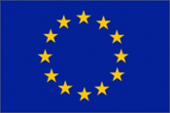While preservation of digital content is now well established in memory institutions such as national libraries and archives, it is still in its infancy in most other organizations, and even more so for personal content. ForgetIT combines three new concepts to ease the adoption of preservation in the personal and organizational context, each overcoming major obstacles:
- Managed Forgetting
- Synergetic Preservation
- Contextualized Remembering
To achieve these goals ForgetIT brings together an interdisciplinary team of experts in preservation, information management, information extraction, multimedia analysis, personal information management, storage computing, and cloud computing, as well as in cognitive psychology, law, and economics, who together will develop the innovative methods for realizing the ForgetIT approach.
The main expected outcomes are the flexible Preserve-or-Forget Framework for intelligent preservation management and, on top of it, two application pilots: one for personal preservation focussing on multimedia coverage of personal events and one for organizational preservation targeted at smooth preservation in organizational content management.
The DFKI takes part with its Semantic Desktop approach to focus on Personal Preservation.
While some users are concerned about preservation, it is not part of most users’ regular practice. Preservation requires manual effort and the users need to think about it to actually do it, it poses a cognitive burden on the users.
Therefore, the approach envisioned in ForgetIT for Personal Preservation is to embed it in the user’s activities in the personal information space in order to collect material to be preserved, evidence for preservation values, and triggers for preservation while keeping user involvement minimal.
How can this be achieved? By concentrating on the Personal Information Management (PIM) of users, we can cover various life events together with associated digital material, usage of the digital material, and evidence for preservation values. For example, we can detect whether a file is only relevant for a certain time frame (such as time tables) or has emotional relevance (such as a picture showing the user’s daughter). Furthermore, it is a chance to derive the user’s mental model on the contents of the material, and thus, get a means to describe the preserved material from a user’s point of view with less effort.
By providing an ecosystem for PIM we can show that collecting material and deriving evidence for preservation is possible. Motivated by the research done in the Semantic Desktop field, by using the Semantic Desktop paradigm in ForgetIT we can
- use the Personal Information Model (PIMO) to represent a user’s mental model over time. The PIMO is a result of the EU IP Nepomuk (GA 027705) and provides a basic ontology of concepts that a person uses for their desktop and PIM. The PIMO is modelled as a semantic graph of interconnected concepts and information objects. Extensions adapt the ontology to specific domains or tasks.
- provide an ecosystem of applications and plug-ins which access the PIMO for vocabulary and knowledge representation. The ecosystem will be the Semantic Desktop implementation in ForgetIT.
- provide means to continuously update a user’s PIMO and adapt to new situations. We have shown that the PIMO can be used over time. The oldest PIMO still in use at the DFKI has been evolving steadily for more than 9 years.
- provide context for information objects such as files, webpages, or emails by using the PIMO. The PIMO provides the knowledge representation layer both for users and for semantic services.
- provide a means to understand – together with observing user actions and access, creation and deletion of information objects – the context of the user and provide services such as context-aware task management.
Get involved! Take our survey on Personal Preservation of your photos here
The ForgetIT project is funded by the EC within the 7th Framework Programme under the objective "Digital Preservation" (GA 600826).
Partners
- Centre for Research and Technology Hellas
- dkd Internet Service GmbH
- German Research Center for Artificial Intelligence (DFKI) GmbH
- EURIX Srl
- Gottfried Wilhelm Leibniz Universität Hannover
- IBM Israel - Science and Technology Ltd
- Luleå Tekniska Universitet
- The Chancellor, Masters and Scholars of the University of Oxford
- The University of Edinburgh
- The University of Sheffield
- Turk Telekomunikasyon AS


